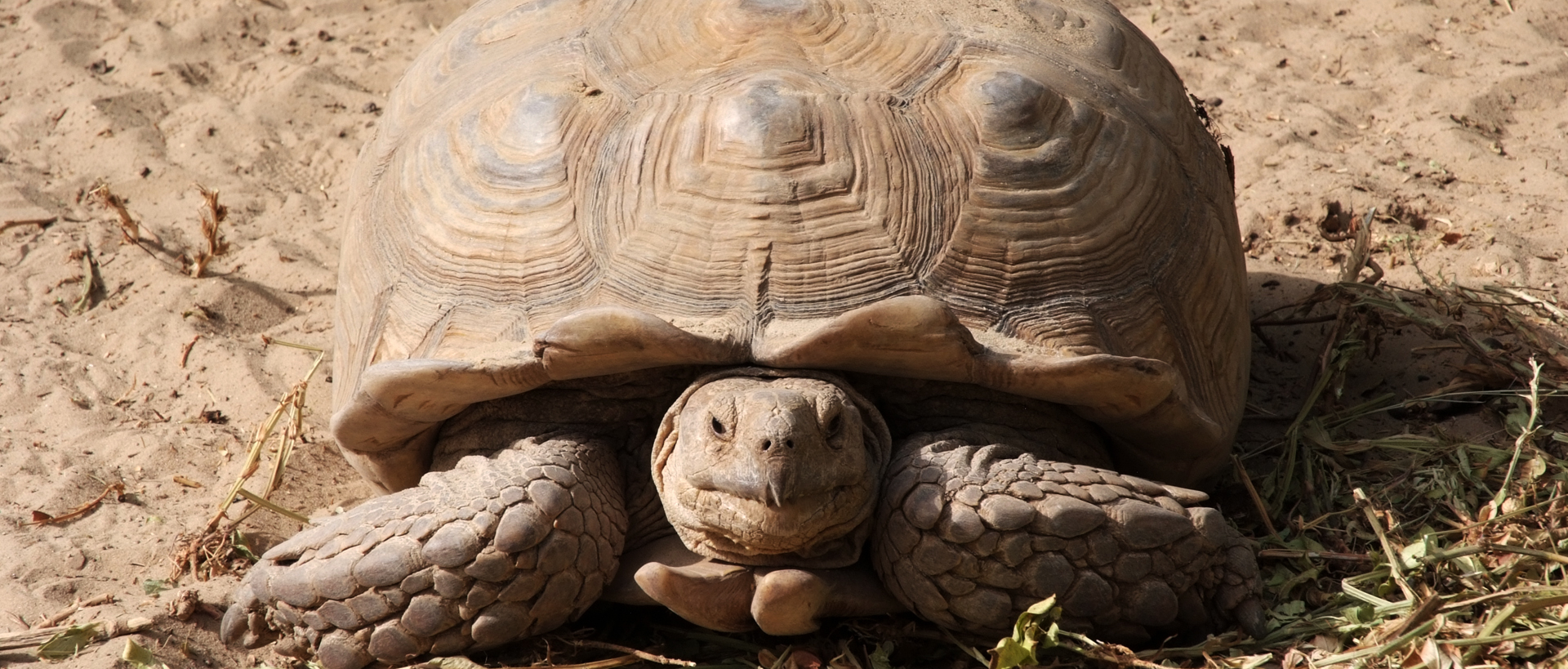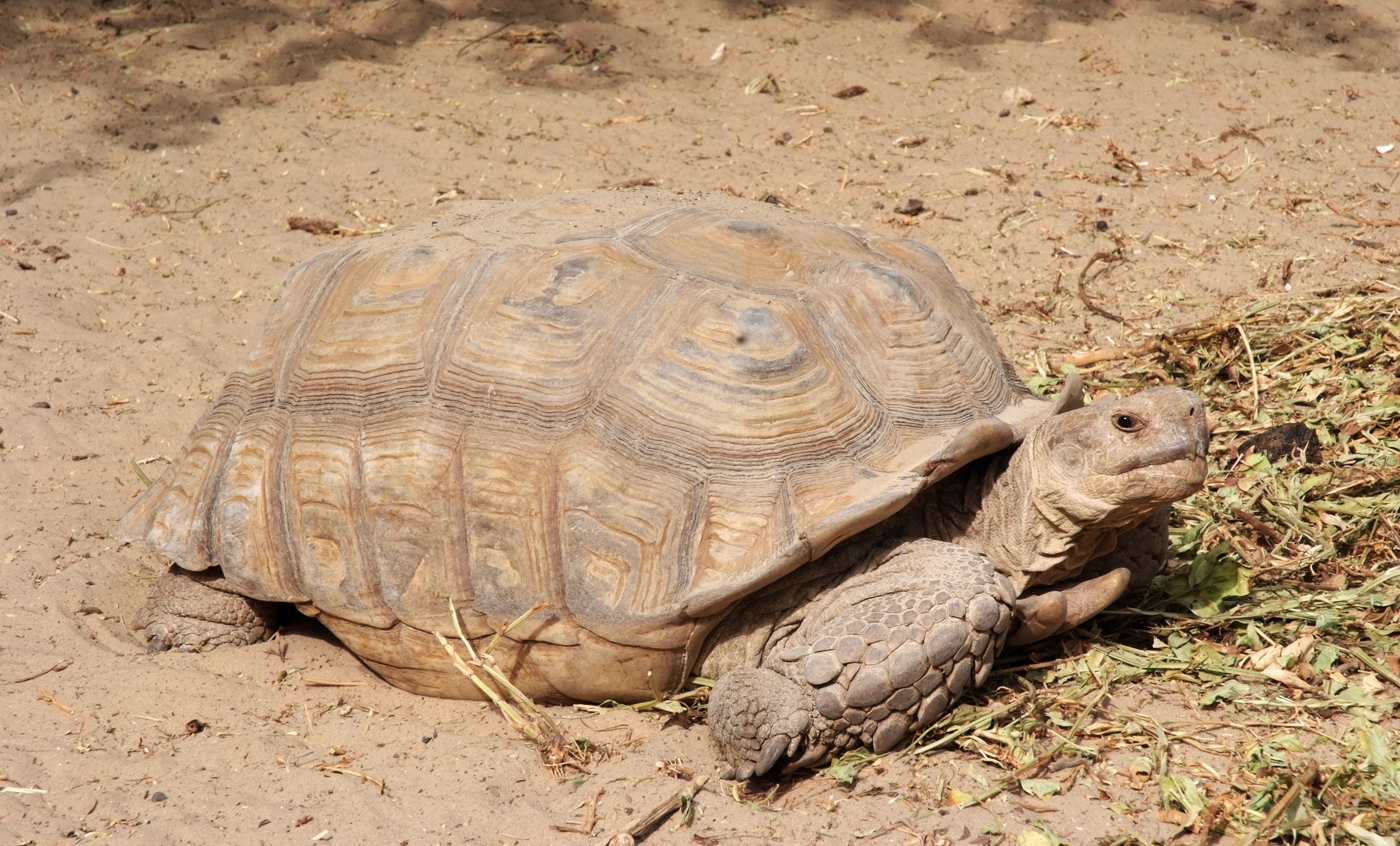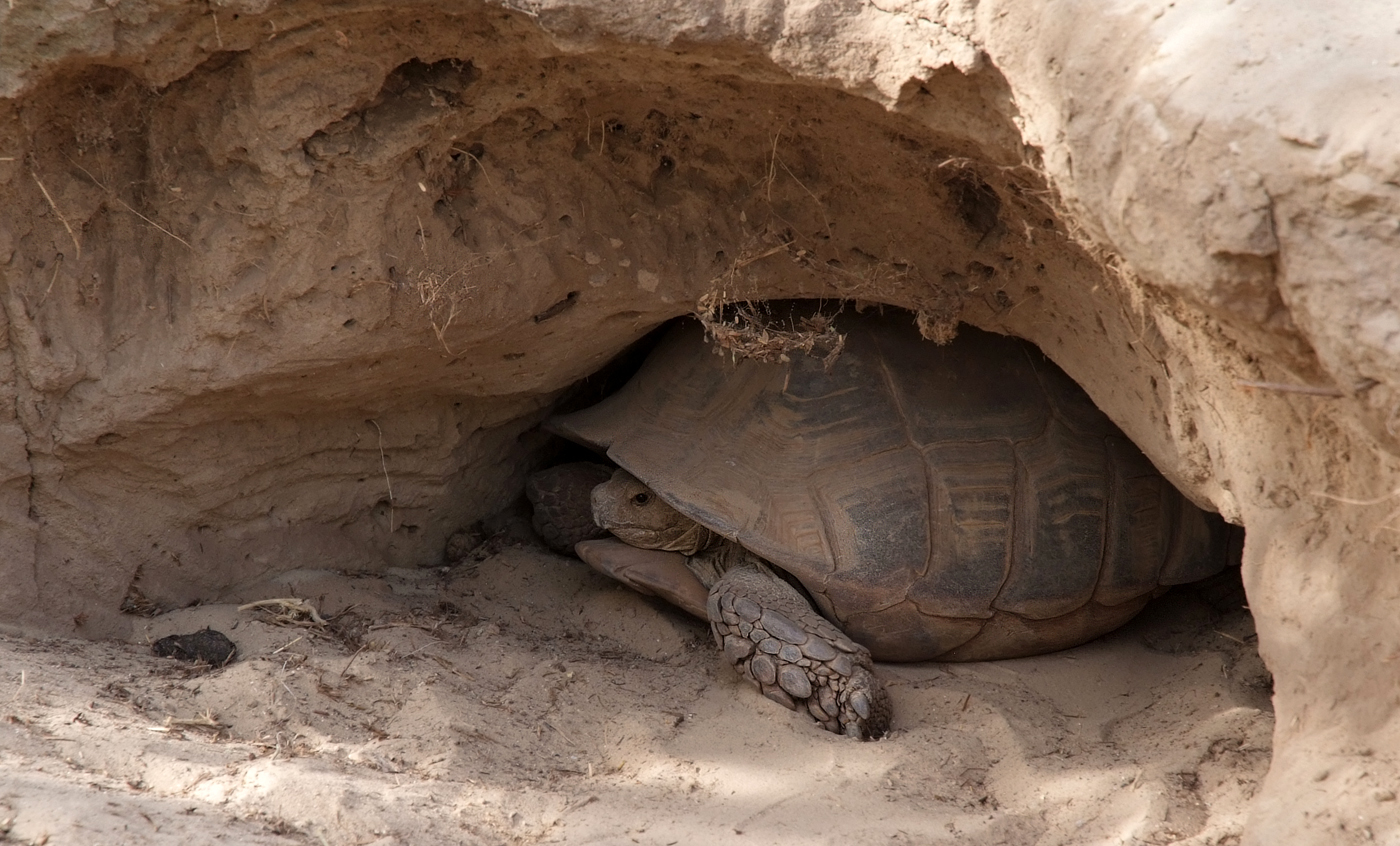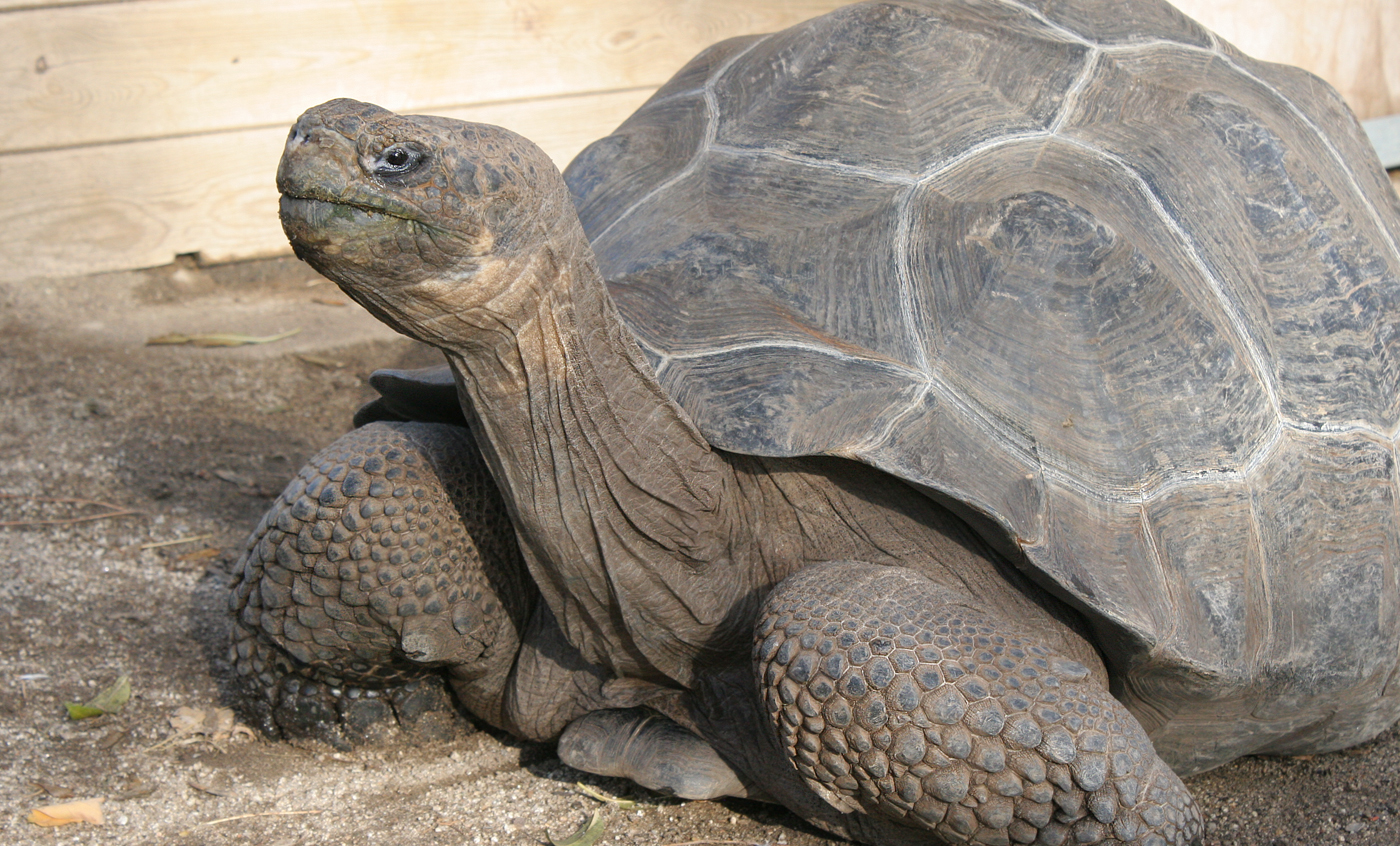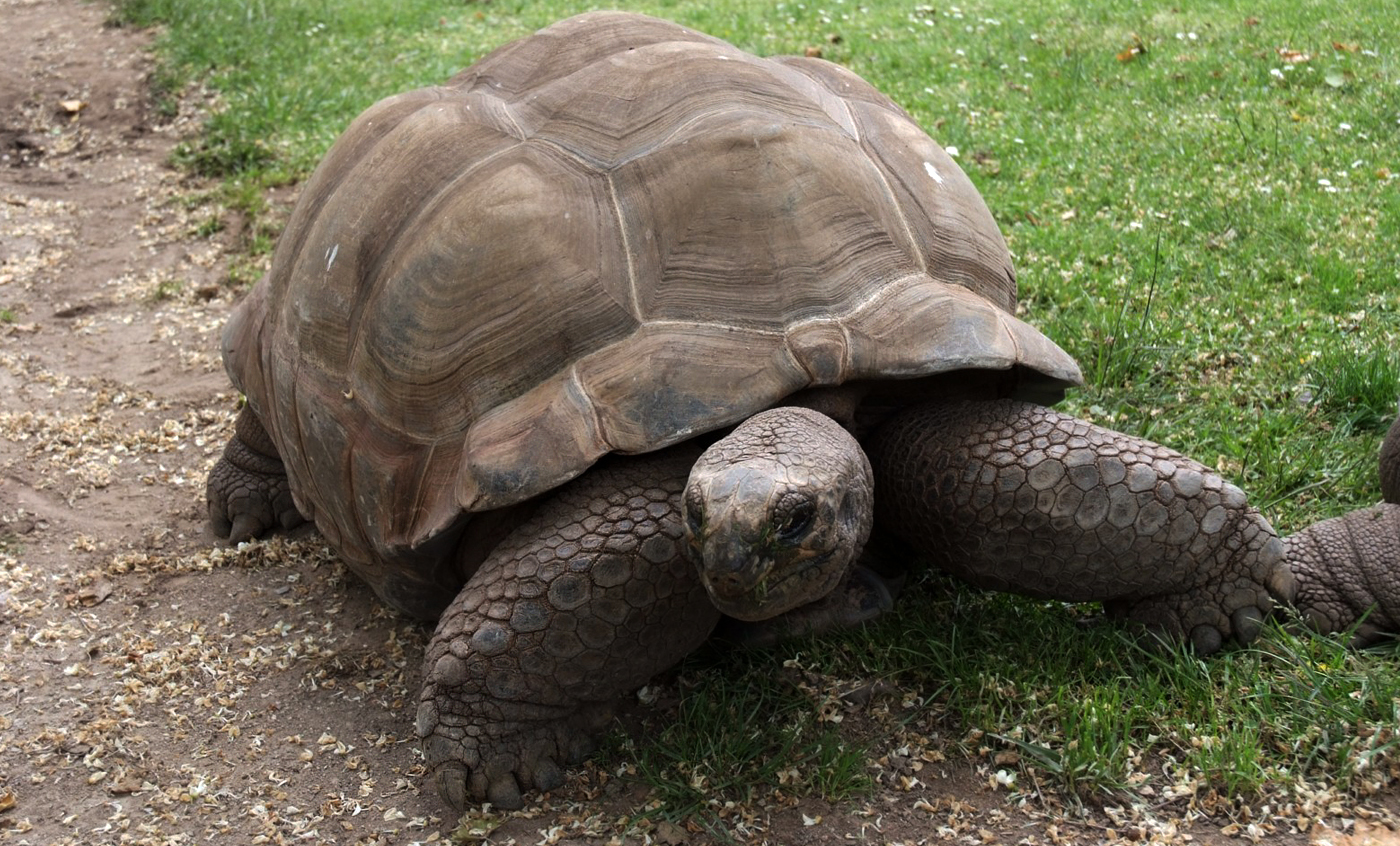African spurred tortoise
The common name comes from the conical spurs that it has on its back legs. This is a large land tortoise, the largest continental species in existence, as it can measure up to 80 cm long and weigh close to 100 kg. Its carapace is also very characteristic, very convex, with the scutes on the edge almost vertical.
The yellow scutes have darker concentric furrows, with the sutures between the scutes very dark. The front edge of the carapace is only slightly serrated, while the rear edge is very serrated and also flips up. The head and limbs are yellow and the front feet have a large number of horny scales on the front.
.
Natural habit
The Sahel: Ethiopia, Egypt, Chad, Eritrea, Mali, Mauritania, Nigeria, Senegal and Sudan.
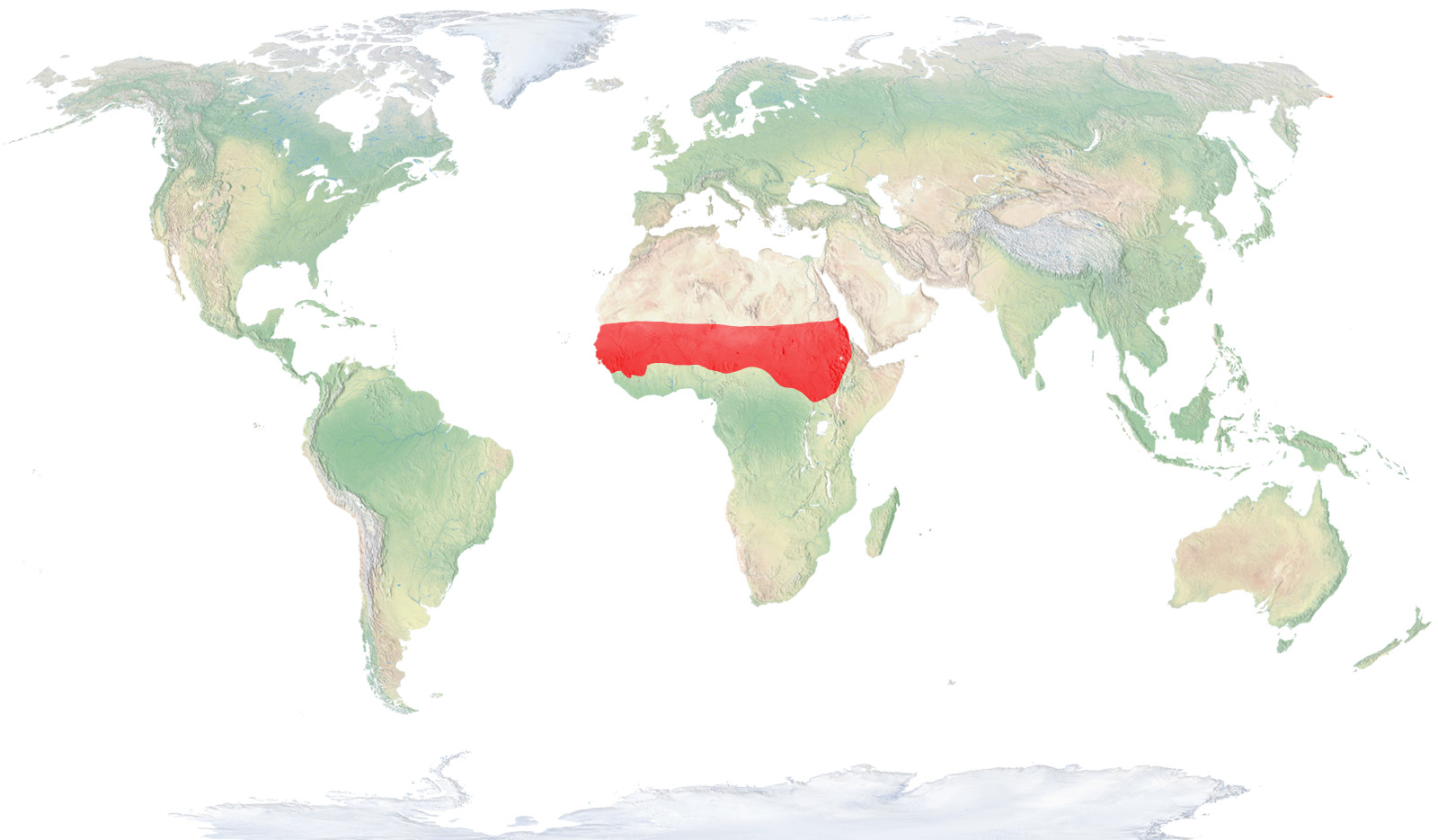
- Distribution / Resident
- Breeding
- Wintering
- Subspecies
Risk level
- Extint
- Extint in the wild
- Critically endangered
- In Danger
- Vulnerable
- Near threatened
- Minor concern
- Insufficient data
- Not evaluated
Taxonomy
Physical characteristics
Biology
Reproduction
Biology
The common name comes from the conical spurs that it has on its back legs. This is a large land tortoise, the largest continental species in existence, as it can measure up to 80 cm long and weigh close to 100 kg. Its carapace is also very characteristic, very convex, with the scutes on the edge almost vertical.
The yellow scutes have darker concentric furrows, with the sutures between the scutes very dark. The front edge of the carapace is only slightly serrated, while the rear edge is very serrated and also flips up. The head and limbs are yellow and the front feet have a large number of horny scales on the front.
It occupies dry savannahs, scrubland steppes and the semi-desert regions of the Sahel.
They are vegetarian, feeding primarily on the succulents in the dry regions where they live. There is often only water available for a very limited period of time in these regions and it therefore depends largely on metabolic water and moisture from the foods they ingest..
Mating takes place from June to March, but is most common between September and November. During courting, the male circles the female and occasionally attacks her with its shell, then immediately mounts here and copulates. The male emits highly-characteristic vocalisations during this process. The laying—with 15 to 32 eggs—tends to be in autumn or winter, and the quite-long incubation period lasts over 200 days.
To avoid the region’s desiccation and high temperatures, they dig nests where they spend the hottest hours of the day, with maximum activity at dawn and dusk. It is a solitary and territorial animal, and males often do not even accept a female outside of the mating period. This species does not hibernate, as the climate is hot year round.
Its populations have decreased greatly in recent decades due to over-capturing for human consumption and its use in traditional medicine, as well as the desertification and degradation of its habitat due to an expansion in agriculture and the pastures for domestic livestock. It has disappeared from extensive regions of its original area of distribution, and is critically endangered today in many others. It tends to survive almost exclusively in national parks and animal reserves.



